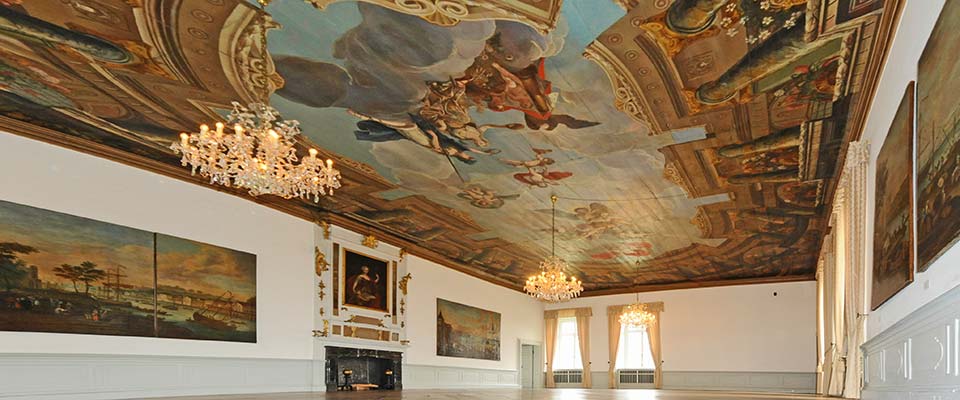Two permanent exhibitions invite you on a journey to the period from the 17th to the 19th century. What was life like at Dyck? Which ideas determined the zeitgeist? Looking for the answers brings visitors to the main castle. There the exhibition HISTORIE (HISTORY) shows the impressive ground floor rooms of the east wing. The banqueting hall is flooded with light and gives an idea of the past splendour. Its Baroque ceiling painting dating back to the construction time of 1656 deserves special attention. Social games set in various garden scenarios are preserved in twelve tableaus by the Rococo painter Rousseau. Two further rooms display precious 18th century wall coverings: a dark, embossed gold leather wallpaper creates a muted, elegant atmosphere. A Chinese silk wallpaper – a present from Emperor Charles IV to his daughter Maria Theresia – came into the possession of the family through inheritance, and illustrates scenes from Chinese everyday working life concerning the main export goods of porcelain, tea, rice, and silk.
The exhibition LANDSCHAFT (LANDSCAPE) in the stable yard is dedicated to garden design in the 18th and 19th centuries. At that time, the political reform efforts of the Enlightenment provided the impetus for social change and influenced the perception of nature. The path that had already been taken in Jüchen since 1820 on the initiative of the lord of the castle, Fürst Joseph zu Salm-Reifferscheidt-Dyck, led away from the formal austerity of the Baroque towards landscaped design. Each view from the windows allows the direct link to be made: the English Landscape Garden surrounding the castle stands as a living example in dialogue with the exhibits. Among these are the book of herbs by Hieronymus Bock, the cacti catalogue by Fürst Joseph and landscape paintings by artists of the Düsseldorf School of Art. Schubert’s Winterreise (Winter Journey) is orchestrated as an audio-visual experience: sitting in blue wing chairs, visitors can listen to the sound paintings and look at a photo cycle in black and white. The exhibition offer is complemented by installations from the area of museum education.
